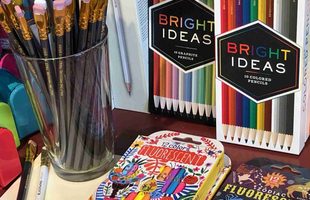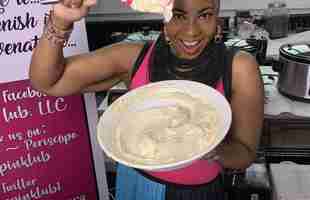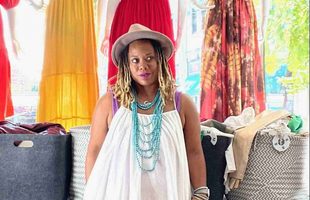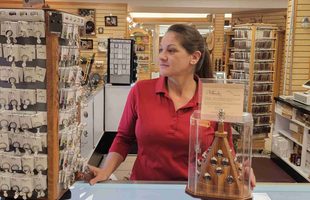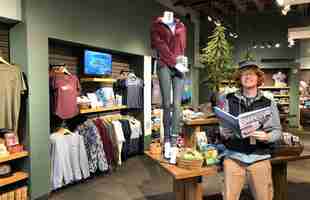By Sara Hodon
Most adults would agree that as a kid, few things were as exciting as back-to-school shopping. From shiny notebooks to backpacks featuring the latest cool graphic, buying brand-new items for the new school year was a favorite time of year for many students. Social media has taken away some of surprise on the first day back, but shopping and the anticipation of breaking in the new supplies is still fun.
Jim Glazner, owner of Smith’s Variety in Mountain Brook, Ala., said beyond the basic supplies which are a “given”, their college student clientele is always looking for unique items which will liven up their dorms and make the whole college experience a bit easier. “Right now we’re selling a lot of speakers that are about 2 inches tall and have Bluetooth capabilities when plugged into a cell phone,” he explained. “They’re actually very loud when played at full volume. Fans for cell phones are another big item. The fan plugs into the phone’s USB port and operates using the cell’s power. Another big seller is the Swell water bottle, which comes in different designs.” Grade school students also shop at Smith’s for cool locker décor and other must-haves.
 Views of the merchandise at The (New) Dime Store. The owner sends out letters to area schools letting them know they get a discount if they shop at the store.
Views of the merchandise at The (New) Dime Store. The owner sends out letters to area schools letting them know they get a discount if they shop at the store.Small retailers are always looking for new ways to make the shopping experience pleasant and convenient for customers. This includes shopping for school supplies, which can be both unpleasant and inconvenient. Pre-packaging the supplies is just one way retailers streamline the whole process. Scotty Walker, owner of Walker’s 5&10 Variety in Holden, Mo., said he has a straightforward approach when it comes to selling: “Everything on the back-to-school supply list would be a big seller, but a few years ago we started putting everything in a kit, and that has really saved our back to school business,” he said. “I think parents really dislike back to school shopping; an awful lot of people ask about our kits.” He cited the cost savings from buying the supplies in a kit rather than individually. “I would estimate a kit costs between $30 and $70; you’d spend more than that buying each item,” he explained.
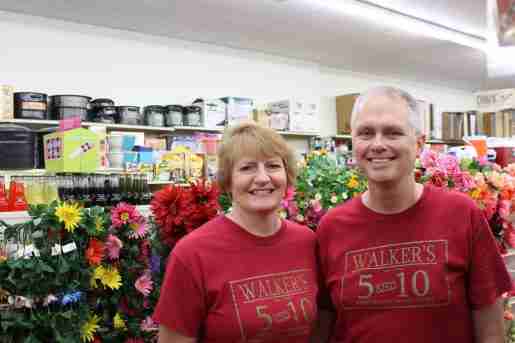 Scotty and Paula Walker, owners of Walker’s 5&10 Variety in Holden, Mo. The couple puts school supplies into kits, saving parents time and money.
Scotty and Paula Walker, owners of Walker’s 5&10 Variety in Holden, Mo. The couple puts school supplies into kits, saving parents time and money.Glazner also packages the supplies. “We’ve gotten with the elementary schools and they give us their supply lists in advance, so parents will call and we’ll get everything boxed up for them so they’re ready in advance,” he said. “Big box stores have all of these items, but it’s really a seek-and-find mission. Parents seem to like not having to shop all around; they like that it’s ready. It’s a service we provide to our customers, like free gift wrapping.” Glazner said their back-to-school sales have declined slightly because some of their area schools distribute the supplies themselves. “I’d say our sales are down about 30 percent because of it,” he said. Dona Willmeth, co-owner (with her husband Jack) of Seneca Variety in Seneca, Kan., also has supply “bundles” available and gets the community involved when she assembles them. “I get the supply lists from the schools and put together bundles for each grade,” she explained. “At the end of the school year, parents can order a bundle for the next year. I really work off the list and make sure I have those items in stock. Besides the items in the bundles, other than backpacks we don’t carry many ‘novelty’ supplies. I give 10 percent of the total sales from the bundles back to a local organization, and members of the organization getting the donation will help me put the bundles together.” As an added convenience, Willmeth delivers the bundles to the schools when they’re ready to be distributed. “Luckily I have a strong 17-year-old son who takes the supplies to the schools, and we put the bundles together at the schools. A local business will donate nylon bags, so we add them to the bundles. It’s also a nice promotion for him.” The bundles take a lot of time and effort. “I work hard to get a good price on the items for the bundles,” she said. “I think they help parents a great deal; they appreciate the convenience. They come in and get a bundle of supplies, then they just have to get a backpack and clothes. And giving a percentage of their sales back to the community helps those organizations, too.”
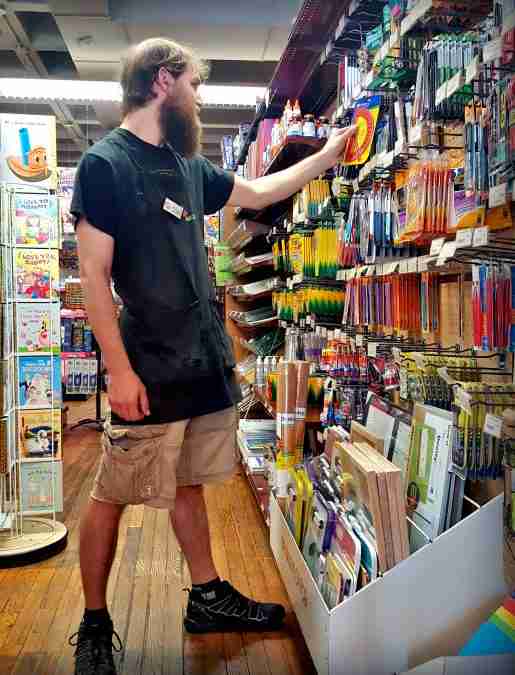 The (New) Dime Store employee Cory Weide photographed in the school section. The owner offers discounts to customers who bring in the school supply list.
The (New) Dime Store employee Cory Weide photographed in the school section. The owner offers discounts to customers who bring in the school supply list.Retailers use different methods to draw in the back-to-school shoppers. Kim Harris, owner of The (New) Dime Store in St. Louis, Mo., said the basics are their biggest sellers—“crayons, pencils, pens, and notebooks” and she offers discounts to customers who bring in the school supply list. “We also send out letters to area schools letting them know they get a discount if they shop with us,” she explained. Retailers who offer the pre-packaged supplies say word-of-mouth is their best advertising, as customers will either ask when the kits will be available or spread the word when they start seeing the kits on the store’s shelves. Retailers also said parents and kids have very different approaches to shopping. “Parents read the list and just want to get what’s on the list. Kids will say they need this and that even though it’s not on the list. For example, the list says the child needs an 8-pack of crayons. The child sees the 48 or 64 pack and asks, ‘Oh, can we get this?’, or they’ll want the metallic or neon pack.”
 Kim Harris, owner of The (New) Dime Store in St. Louis, Mo. Harris said crayons, pencils, pens and notebooks sell best.
Kim Harris, owner of The (New) Dime Store in St. Louis, Mo. Harris said crayons, pencils, pens and notebooks sell best.Glazner said social media has taken some of the fun out of back-to-school shopping for kids, but at the same time, students are great marketers. “Parents come in and just want the items. Kids are concerned about neon pencils and what’s cool. In this age of social media where kids know what their friends are doing every minute of every day, they see what they’re buying for school and they’ll ask their friend where they got a certain item. Their friend will say ‘Oh, I got it at Smith’s’, so the other friend will come in and want to buy that same item. The kids do the marketing for us.” Walker said back-to-school shopping is “strictly a parent thing. We might have some high school kids come in for notebooks, but for younger kids it’s mostly the parents. I don’t sell any fashion or licensed items for school supplies. Today’s fashion is tomorrow’s ‘What am I going to do with this inventory?’” Although school supplies are important for student success, Walker says he views them as just that—supplies. “I see them as pretty utilitarian,” he said. “To me they’re like the hardware department. We have fun and cute things in other areas of the store, but really, a pencil is just a pencil, so we keep things pretty basic.”
